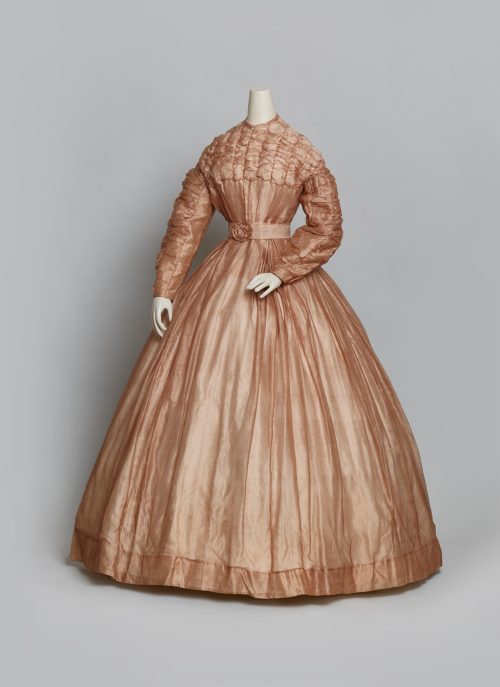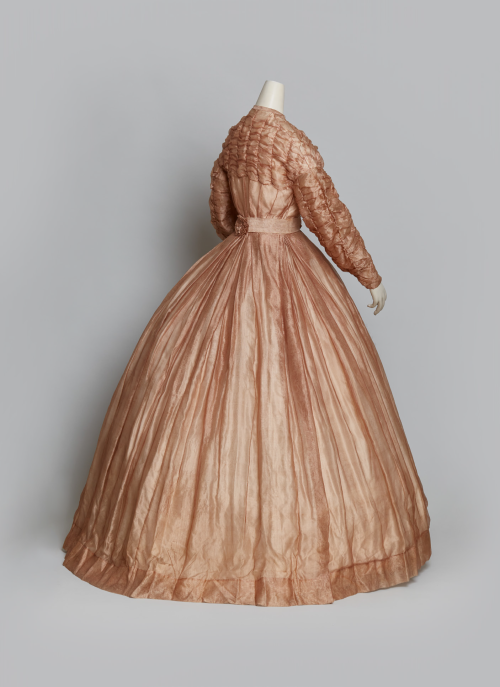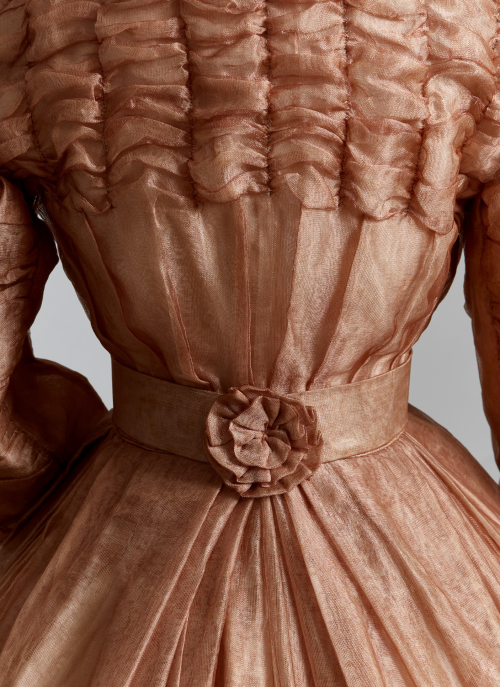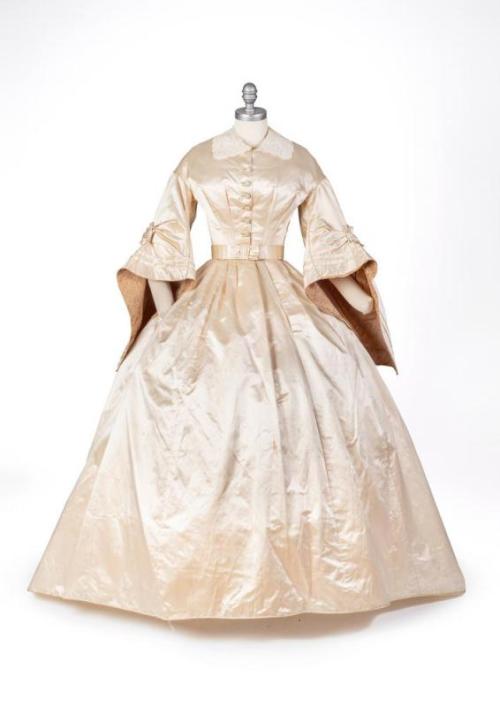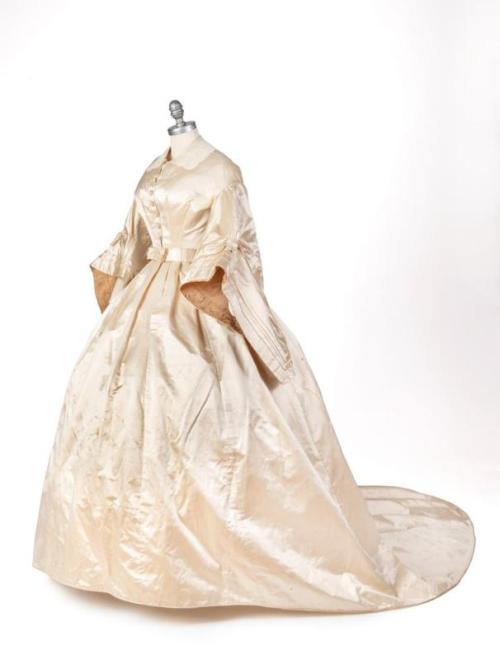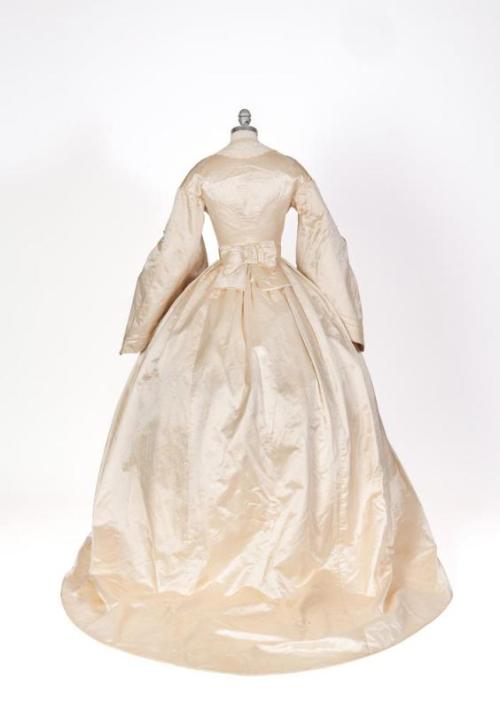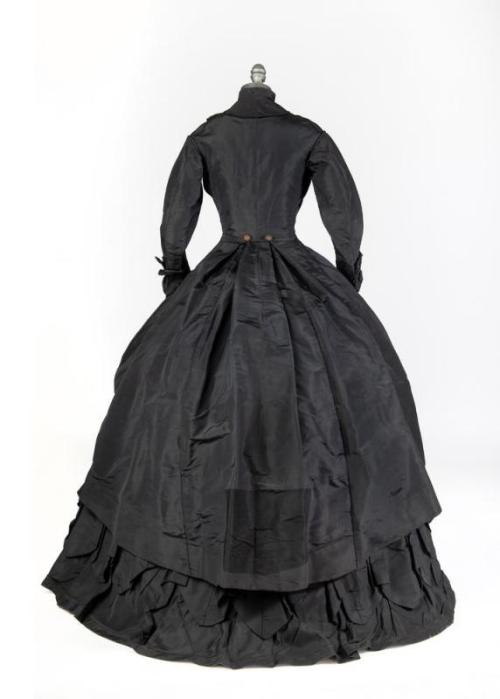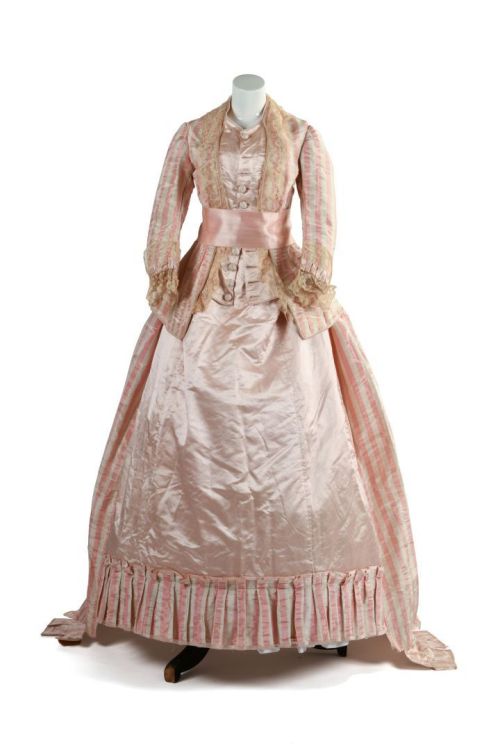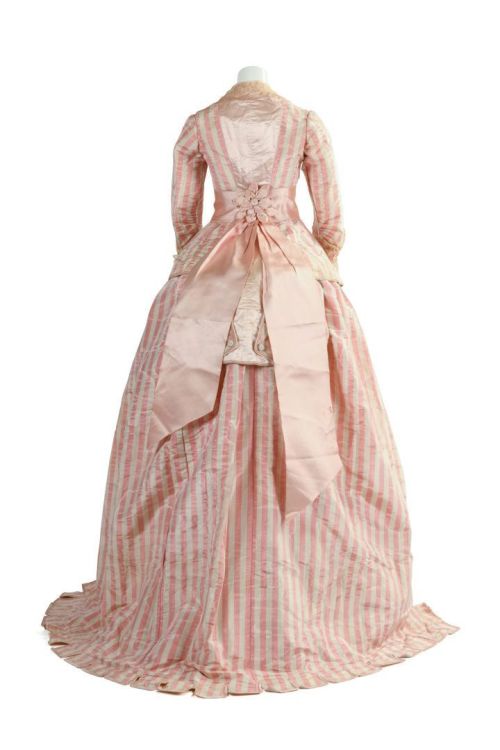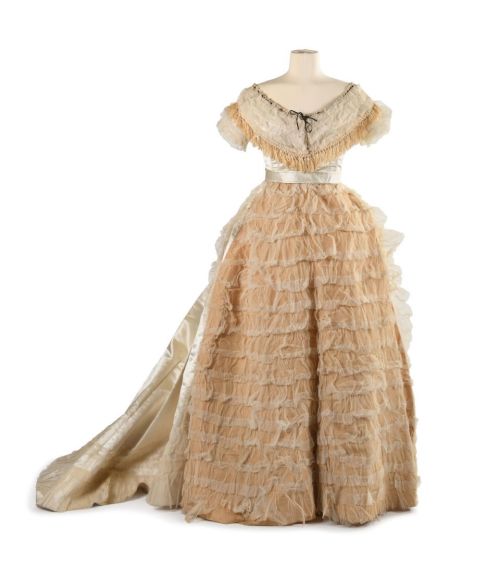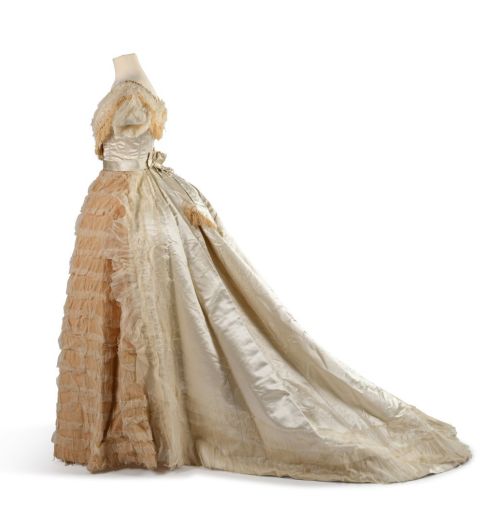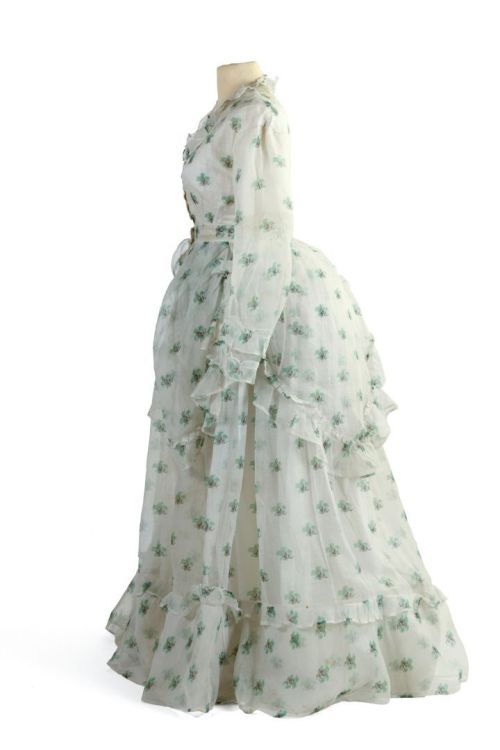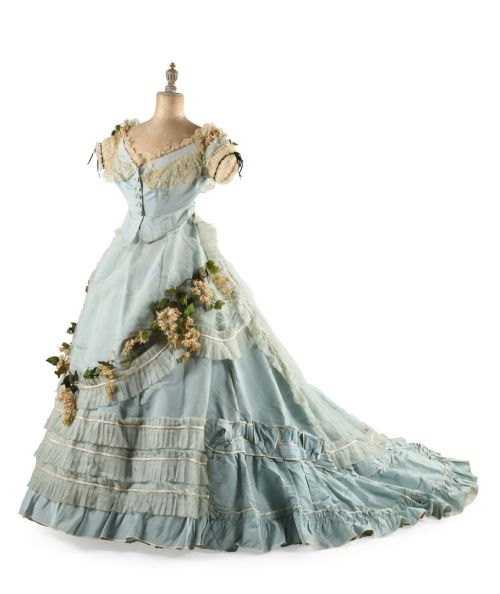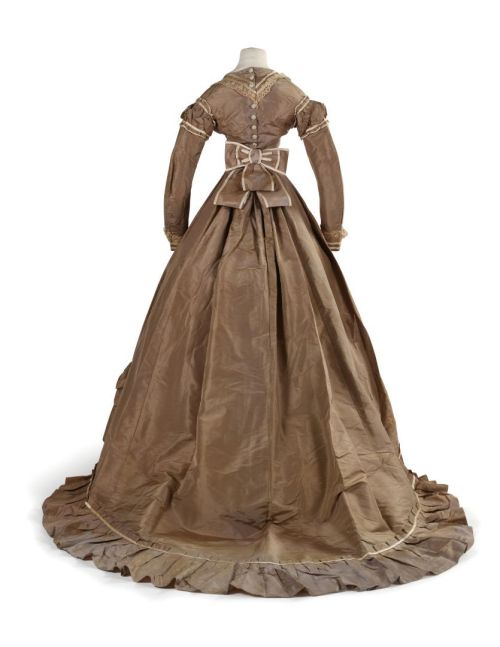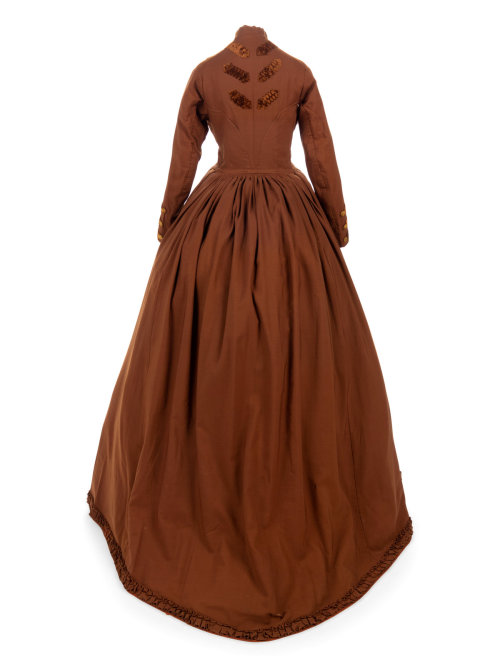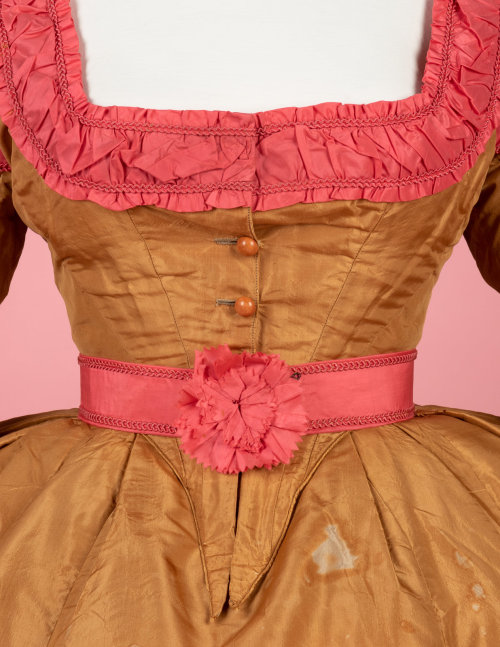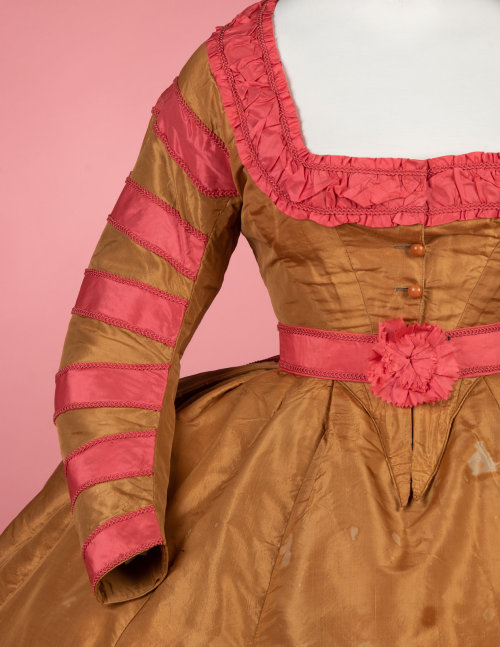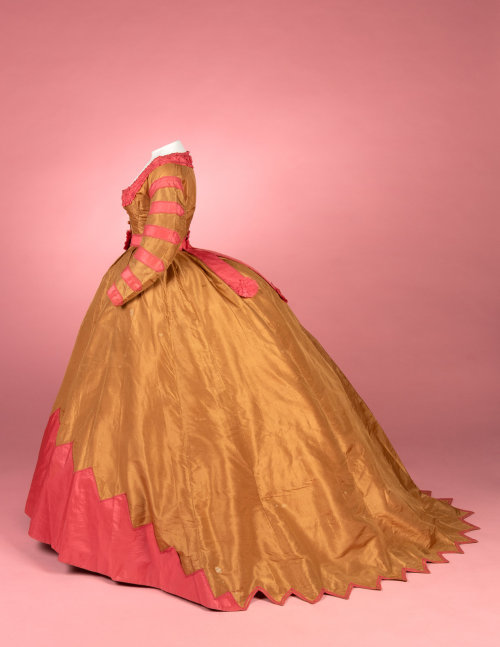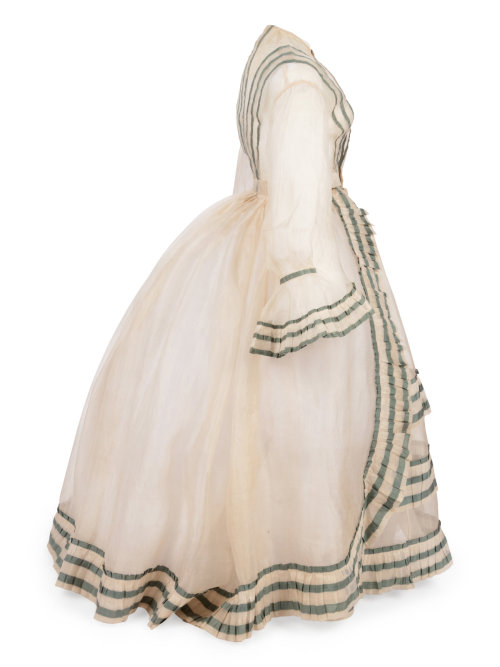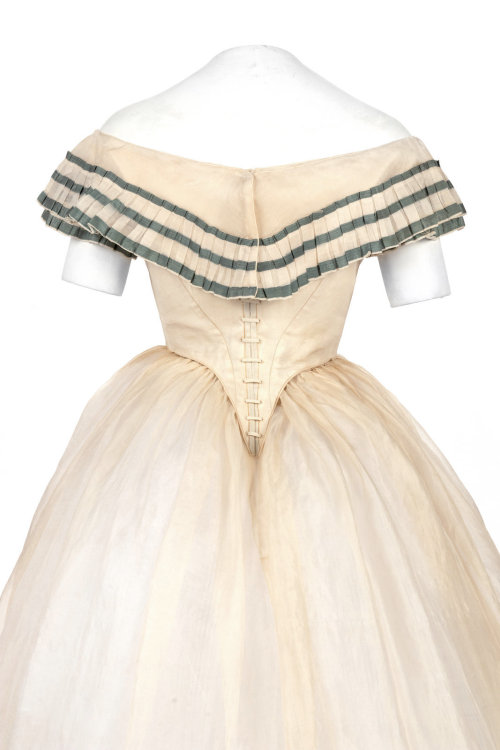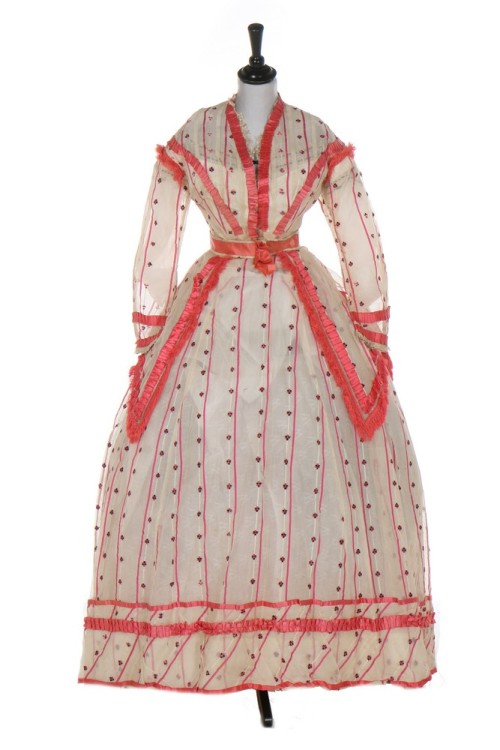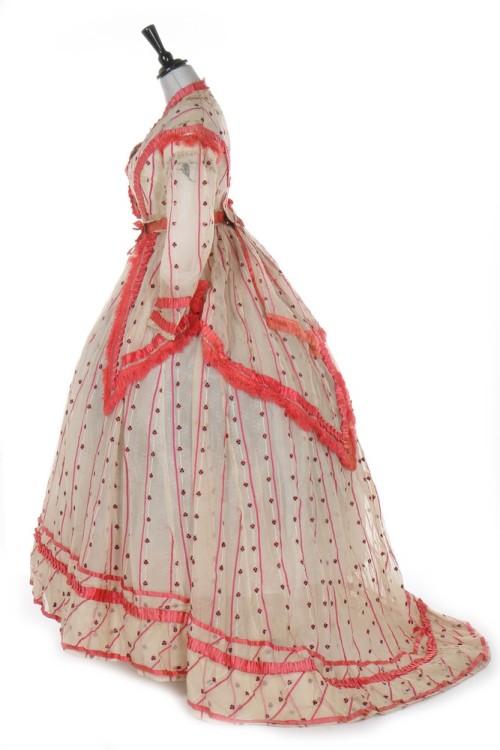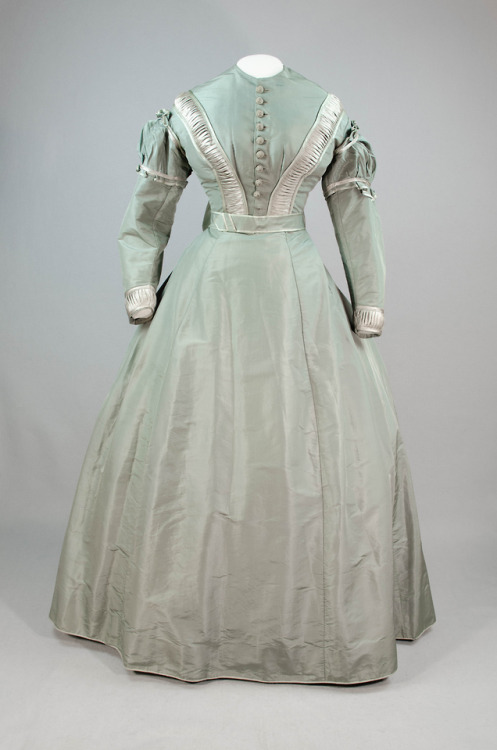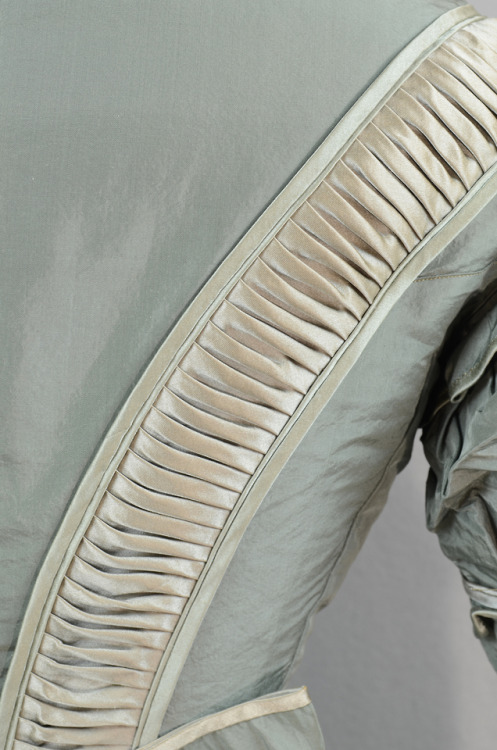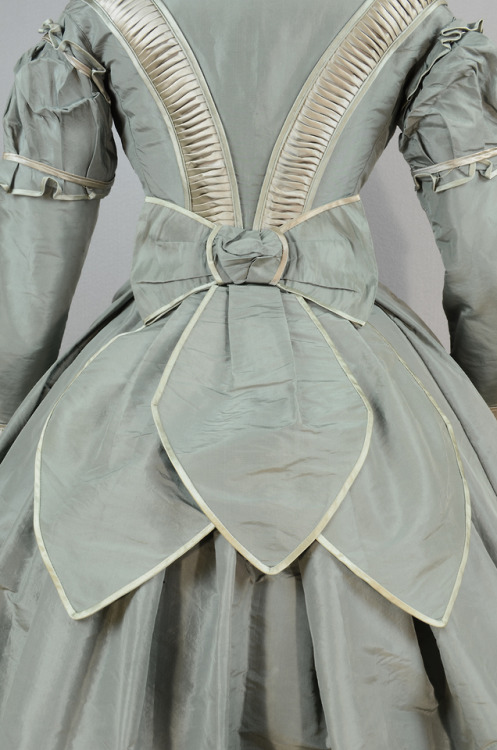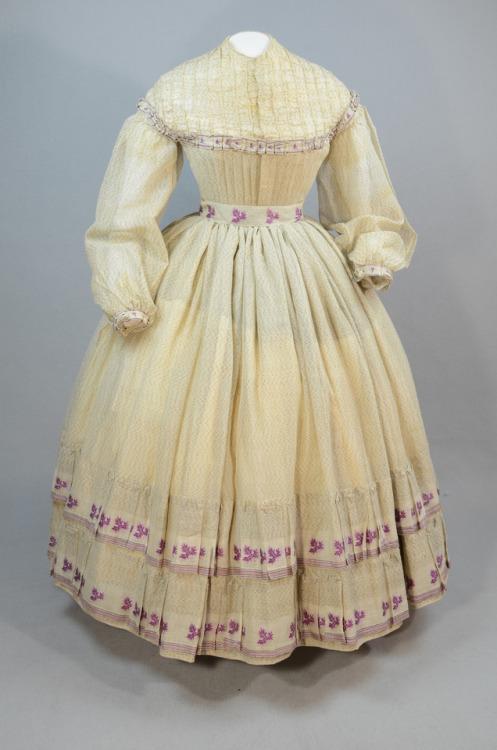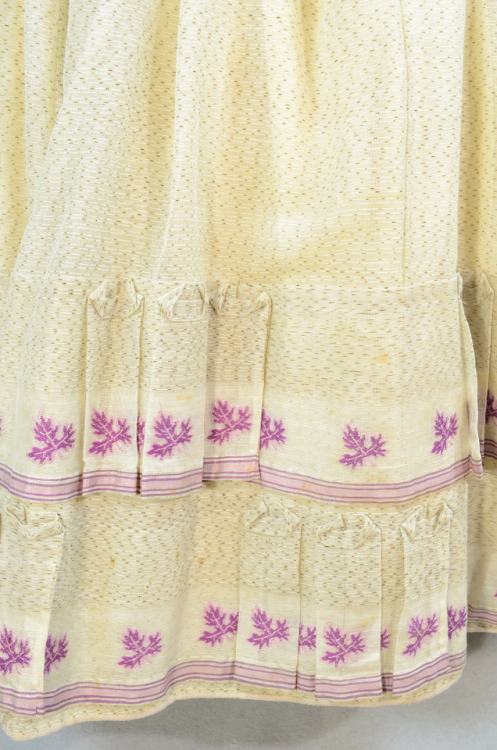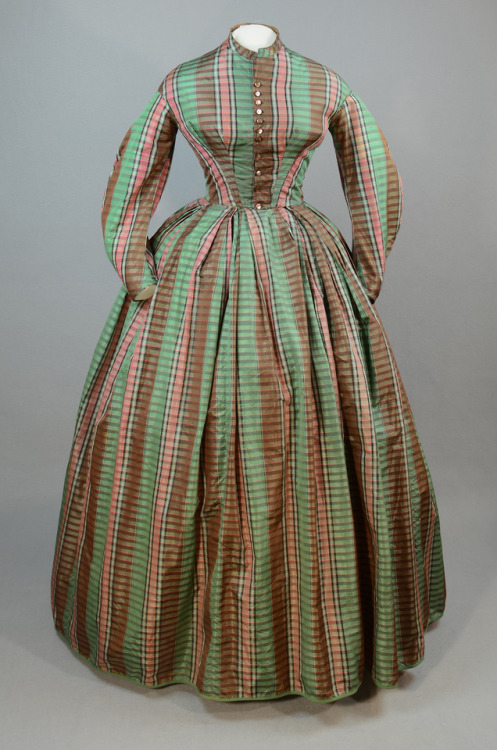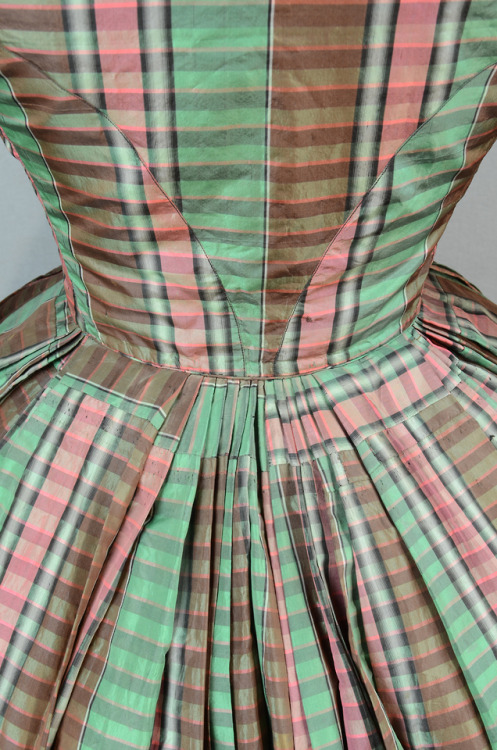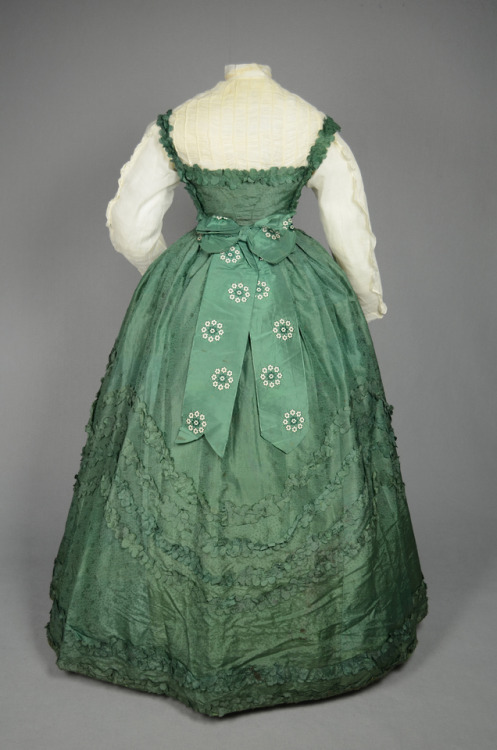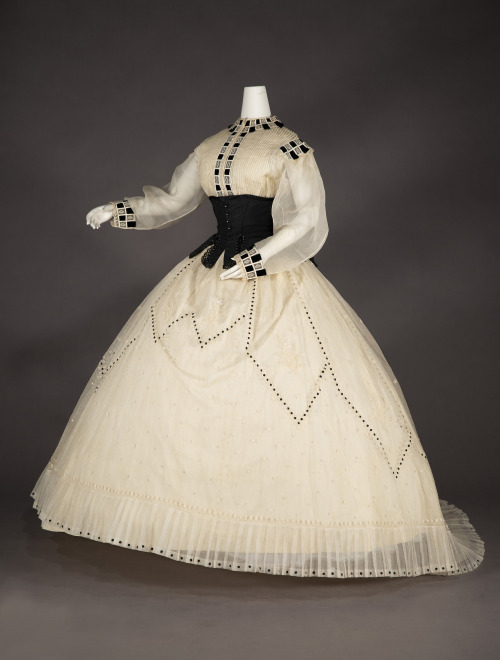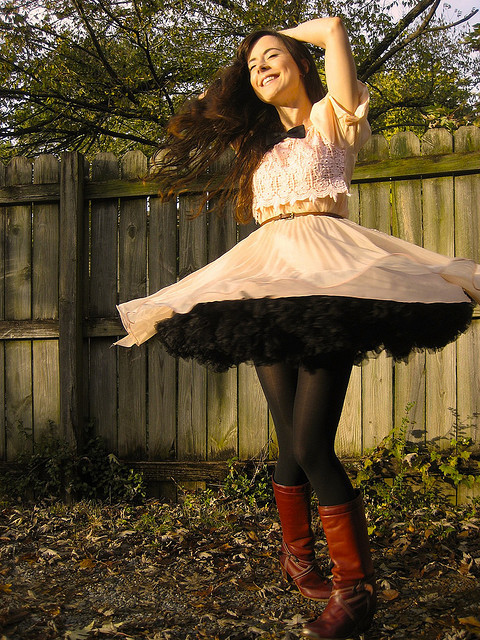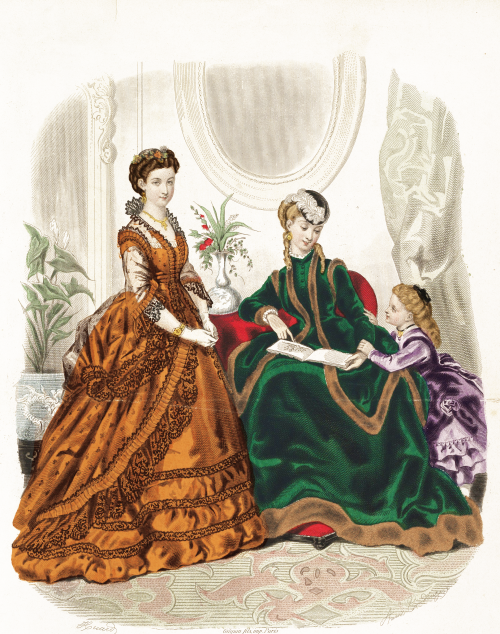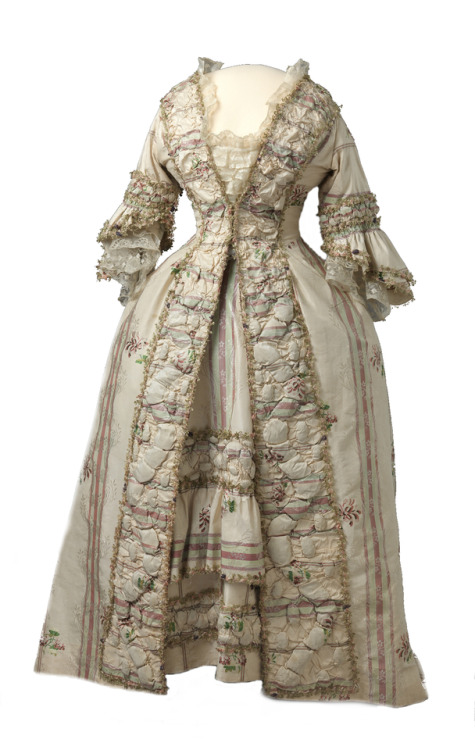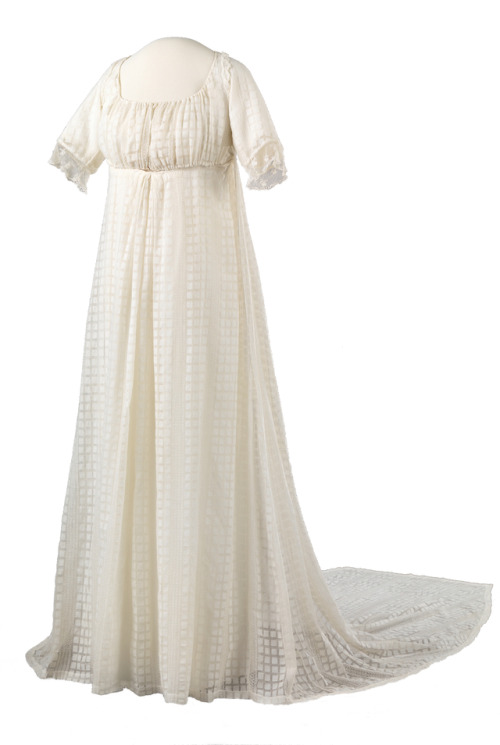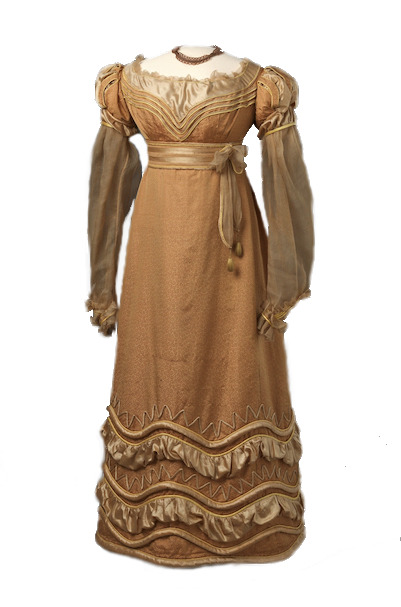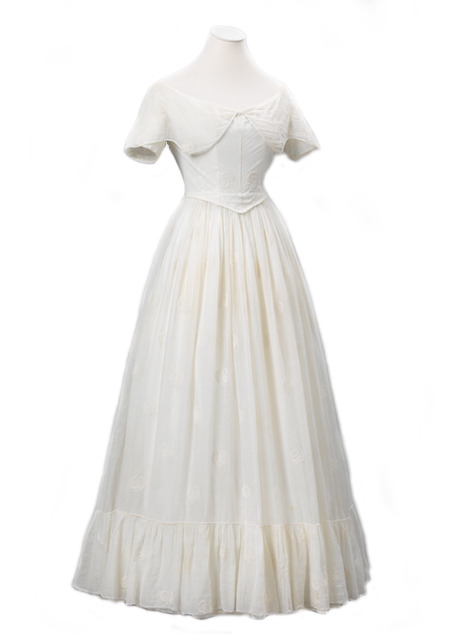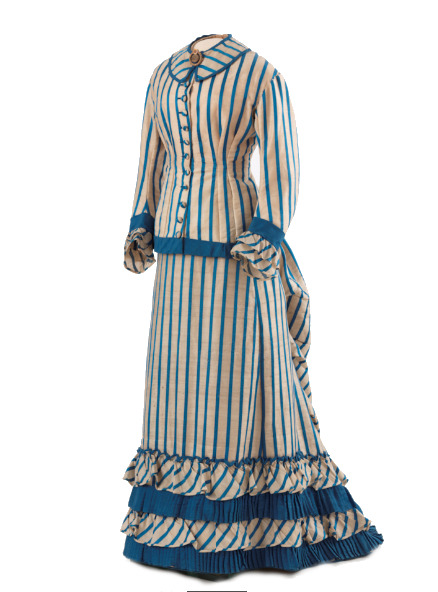#crinoline
Evening dress and parasol ca. 1862-65
FromCora Ginsburg (auctioned 1998, now in the collection of the Kyoto Costume Institute)
Post link
Dress ca. 1870
From the Irma G. Bowen Historic Clothing Collection at the University of New Hampshire
Post link
Day dress ca. 1860′s
From the Irma G. Bowen Historic Clothing Collection at the University of New Hampshire
Post link
Day dress ca. 1865
From the Irma G. Bowen Historic Clothing Collection at the University of New Hampshire
Post link
Dress, 1860-63
From the Irma G. Bowen Historic Clothing Collection at the University of New Hampshire
Post link
Overstock Sale! 25% off everything in the shop, now through Sunday! #etsyshop #58petticoats #pinup #pinupgirl #burlesque #rockabilly #steampunk #vlv #boudoir #boudoirphotography #petticoat #crinoline #girdle #corset #wearvintage
Post link
Princess Mints! #princess #prince #pink #wearvintage #petticoat #crinoline #dancewear #ballerina #etsyshop #58petticoats
Post link



Visiting Dress | c. 1865⠀
———⠀
The inspiration for this visiting or late day ensemble was a toilette designed by the so-called father of haute couture, Charles Frederick Worth and worn by Princess Pauline de Metternich, wife of the Austrian ambassador to the French court during the Second Empire, who was known for her trendsetting elegance. A. A. E. Disdéri, the inventor of the carte de visite, recorded multiple views of the princess in her Worth gown with its distinctive vertical black velvet appliqués on the full, trained skirt between 1861–62. Although it is impossible to determine what sources the maker used to confect her à la mode dress, the inclusion of fullscale paper patterns in fashion periodicals from about 1850 and the expanding retail distribution of sewing machines, especially in the 1860s, allowed—even encouraged— women to re-create the most up-to-date styles at home. Two leading publications, The Englishwoman’s Domestic Magazine and Le Moniteur de la Mode, regularly offered their readers patterns that could be modified by the individual dressmaker and advertised the newest models of sewing machines. In her assertive interpretation of Worth’s influential design, the wearer, and likely maker too, of this gown announced her awareness of and participation in a widespread trend that originated from the most famous couturier in the long-acknowledged capital of fashion.
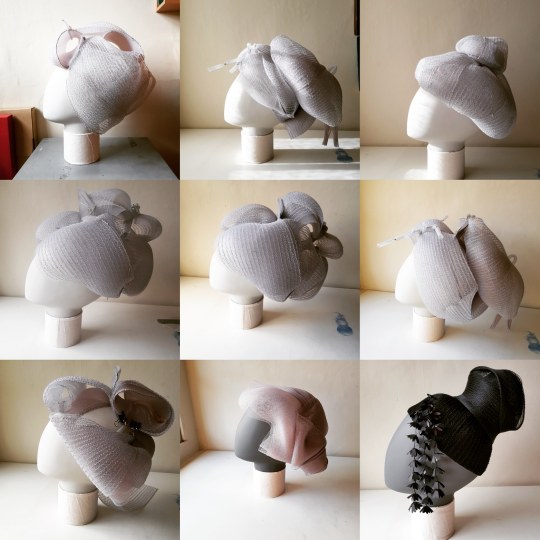
Today (Thursday 27th August 2020) the current exhibition, “Kimono: Kyoto to Catwalk”, reopens at the Victoria and Albert Museum after a period of closure due to the Coronavirus pandemic.
“This exhibition will present the kimono as a dynamic and constantly evolving icon of fashion, revealing the sartorial, aesthetic and social significance of the garment from the 1660s to the present day, both in Japan and the rest of the world.”
Earlier this year I completed a project for this exhibition, making eleven “wigs” for the fibreglass mannequin heads in hairstyles to represent different periods in Japanese history.

(Image credit: Rachael Lee, Textile Conservation Display Specialist in the Textile Conservation Department at the V&A)
The wigs for this exhibition were intended to be abstract and an impression of the silhouette, rather than incredibly detailed, so as not to distract too much from the costume displayed on the mannequins. When wigs are requested for mannequins, they are often made in house at the museum by the Textiles Conservation and Mounting Department, but due to restrictions on time they were outsourced on this occasion. I was involved in a similar project for another V&A exhibition back in 2018, “Frida Kahlo: Making Her Self Up”, which involved making three headdresses constructed from paper flowers. One of my previous blog posts details the making of these.

The wigs for the Kimonos exhibition were to be made from milliners crinoline, or “crin” for short, which in its nature is really springy and easy to make into voluminous shapes. Crin is an extremely versatile fabric that can be used for millinery, craft and haberdashery as well as fashion and dressmaking. The intention was to form shapes by manipulating it and stitching it together, then attaching these pieces to a Rigiline frame which would sit on the head of the mannequins. Rigilene is a type of boning made of woven nylon rods and can be stitched directly to fabric, without a casing.

The concept of these crin and rigilene wigs was not new, in 2011 an article was published in the V&A’s Conservation journal entitled, “Keep Your Hair On - The development of conservation friendly wigs”:
“One of the challenges we regularly encounter when displaying head wear is how to achieve a good fit with proper support when headdresses are designed to be worn upon elaborate hair styles. The solution to this quandary would appear easy enough; give heads hair. This seemingly straight forward answer was not as easy to apply as one might think largely due to exhibition designers and curators desire to display objects on non-realistic, abstract mannequin forms. This current trend is considered least distracting to the audience’s appreciation of the costume itself.”
My contact at the museum was Rachael Lee, a Textile Conservation Display Specialist in the Textile Conservation Department, who had been working for many months displaying numerous kimonos for the exhibition. She and some of her colleagues had already worked on a couple of protoypes of the wigs that were sent to me to get an idea of the forms they wanted. I was however told that I was to have creative control over the wigs and to have fun with them!
For the eleven wigs that they wanted I was supplied with reference images to work from.

The wigs were to be built on to Rigilene frames. I first measured the circumference of the fibreglass head at approximately the point where I wanted the hairline of the wigs to sit. I left a bit of slack knowing that the frame would get packed out a bit when the crinoline layers were attached. I cut a strip of Rigilene that was overlong so that it could be overlapped and joined together to form a circle, I drilled a series of small holes through the overlapped pieces and then stitched through them to hold the loop together. A second piece of Rigilene was then cut to span the top of the head, and it was joined to the first ring, slightly off centre, in same way using thread. Finally, a shorter piece was cut to tether the outer ring and the central bar together at the back.
As the Rigilene was quite springy, initially I temporarily joined the overlapped pieces using a dab of superglue and held them in place with a bulldog clip whilst it set. This then helped as the two pieces of Rigilene were set in place and held together for me to drill the holes using my Dremel. This process was reproduced a number of times to give me enough frames to experiment with and work from.
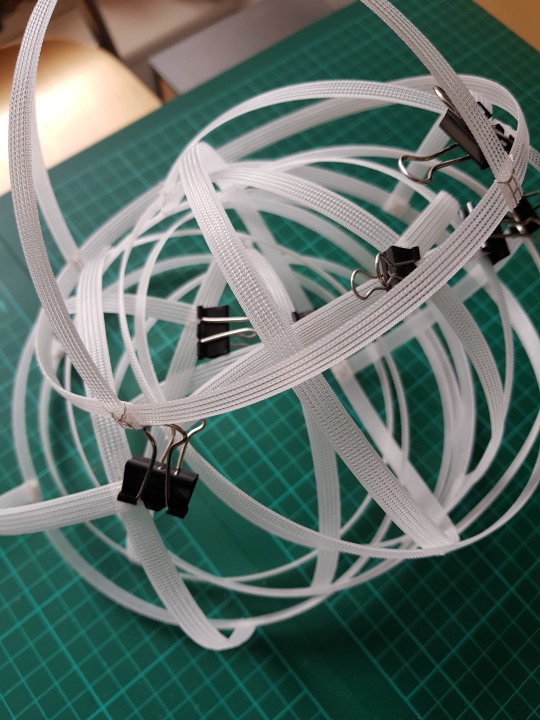
As I was working remotely from home, I sent many images of the wigs at various points in their construction to Rachael Lee, who in turn showed them to the curators who gave me feedback during the making process. I had never worked with either Rigilene or crin before so it was a learning curve, manipulating the crin into different shapes and forms to make the 2D images I had into three dimensional forms was a fun challenge!
Further blog posts are to follow in the coming days about the steps I took to create these flamboyant wigs, from the subdued “Gibson Girl” through to the elaborate “Courtesan” with some more modern “Memoirs of a Geisha” characters thrown in I feel I have learnt a lot about Japanese hairstyles along the way!
Evolution in women’s fashion in Europe, 1770s to 1910s
All attires from The National Museum in Oslo
Post link




